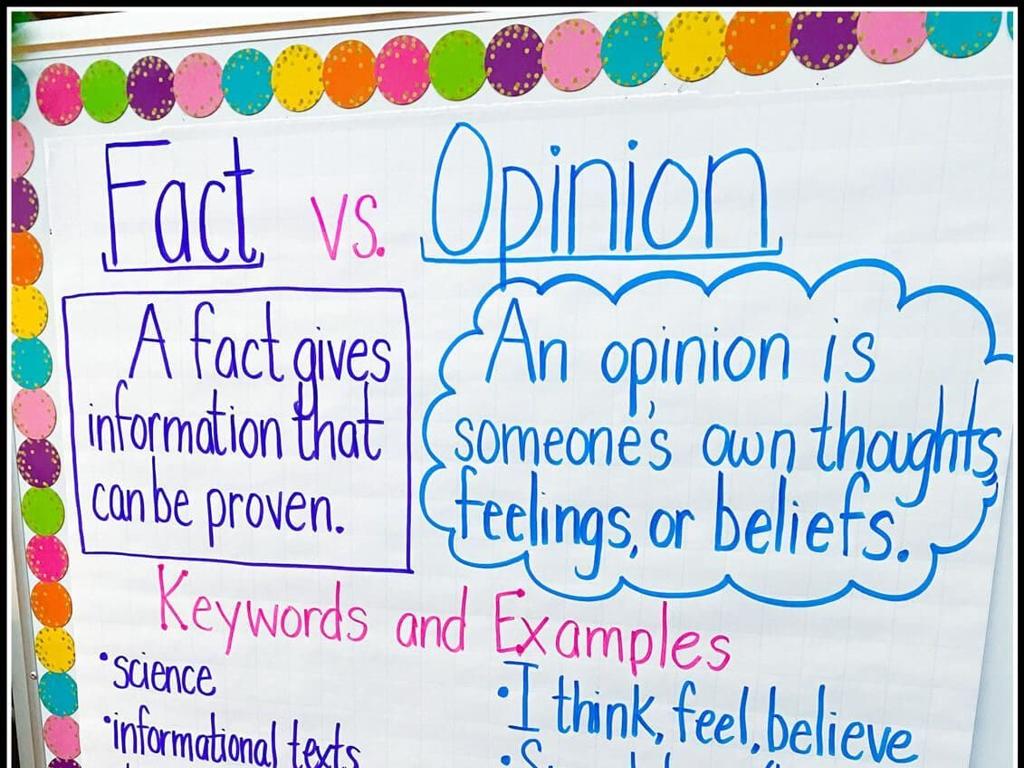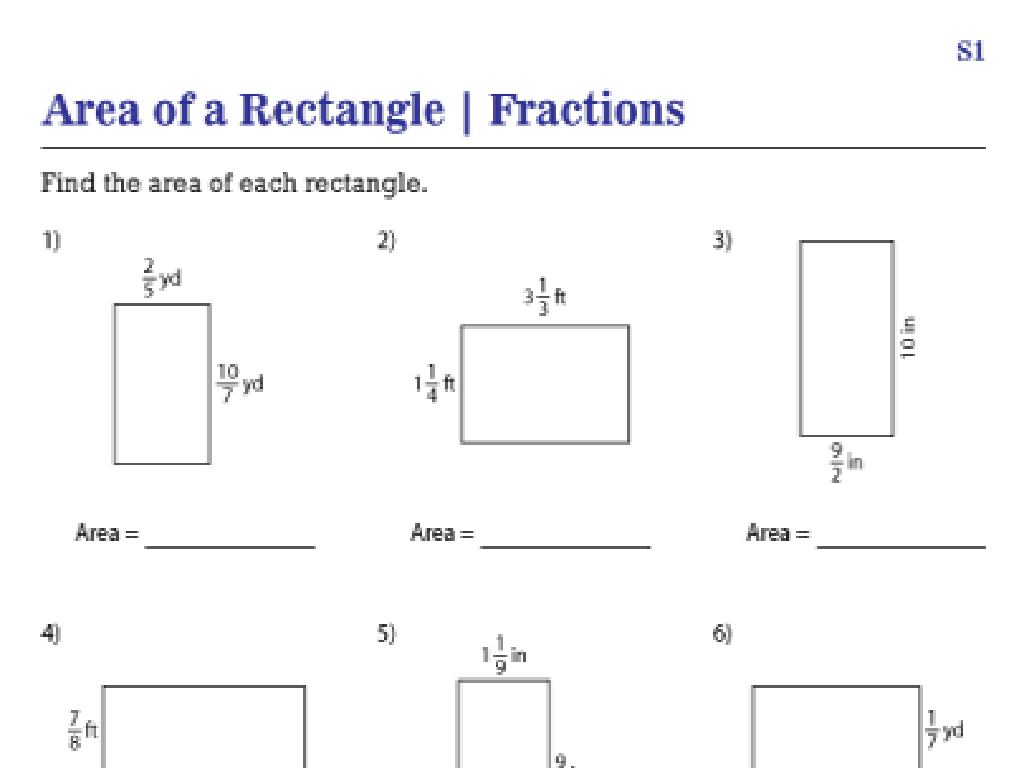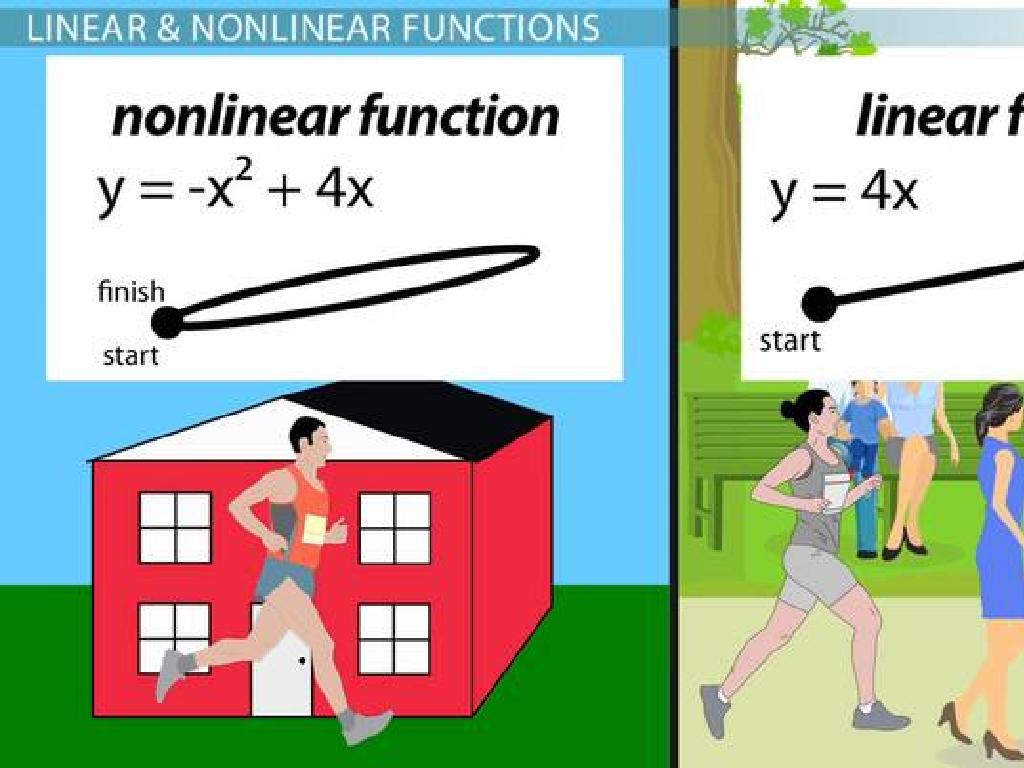Multiply And Divide Decimals: Word Problems
Subject: Math
Grade: Sixth grade
Topic: Multiply And Divide Decimals
Please LOG IN to download the presentation. Access is available to registered users only.
View More Content
Introduction to Decimals
– Reviewing decimal basics
– Decimal places: tenths to thousandths
– Places after the decimal: 0.1 (tenths), 0.01 (hundredths), 0.001 (thousandths)
– Decimals as fractions
– Every decimal is a fraction: 0.75 is 75/100
– Decimals show parts of a whole
– Like a pie, decimals represent pieces: 0.5 is half
|
Begin with a quick review of what decimals are and how they are used to represent numbers that are not whole. Emphasize the concept of place value to the right of the decimal point, explaining tenths, hundredths, and thousandths with examples. Clarify that decimals are another way to express fractions, making the connection between the two concepts. Use visual aids like pie charts to illustrate how decimals represent parts of a whole, reinforcing the idea that decimals are fractions in disguise. This foundational understanding is crucial for solving word problems involving multiplication and division of decimals.
Multiplying Decimals: Mastering the Steps
– Ignore the decimal point initially
– Align numbers by the rightmost digit
– Multiply as with whole numbers
– Count decimal places in both numbers
– If one number has 2 decimal places and the other has 1, the answer should have 3 decimal places.
|
When teaching students to multiply decimals, start by having them ignore the decimal point. This simplifies the process and allows them to focus on the multiplication of numbers as if they were whole numbers. Emphasize the importance of aligning the numbers by their rightmost digits, not by the decimal points, to ensure accurate multiplication. After multiplying, instruct students to count the total number of decimal places in the original numbers. The sum of these places determines where to place the decimal in the answer. For example, if multiplying 3.25 (2 decimal places) by 4.5 (1 decimal place), the answer will have 3 decimal places. This methodical approach helps students understand the role of decimal places in the multiplication process without confusion.
Dividing Decimals: Mastering the Process
– Divide decimals by whole numbers
– Just like whole numbers, but remember to place the decimal point in the answer.
– Decimal point in the quotient
– Bring the decimal point straight up into the answer space above the dividend.
– Divide decimals by decimals
– Multiply both numbers by the same power of 10 to make the divisor whole.
– Make divisor a whole number
– If divisor is 1.2 and dividend is 3.6, multiply both by 10 to get 12 into 36.
|
This slide introduces students to the concept of dividing decimals, both by whole numbers and by other decimals. Start by explaining the process of division as they know it with whole numbers, then show how to bring up the decimal point into the quotient when dividing by a whole number. For dividing by decimals, demonstrate how to convert the problem into a division by a whole number by multiplying both the divisor and dividend by the same power of 10. This will simplify the division process. Provide examples and practice problems for each case. Encourage students to work through the problems step-by-step and to check their work by multiplying the quotient by the divisor to see if it equals the dividend.
Multiplying Decimals: Word Problems
– Comprehend the multiplication problem
– Identify numbers to multiply
– Solve the problem systematically
– Break down the problem, multiply decimals as with whole numbers, then place the decimal point
– Example: Cost of apples
– 2.5 pounds of apples at $3.40/pound: Multiply 2.5 by 3.40
|
This slide is aimed at helping students tackle word problems involving multiplication of decimals. Start by understanding what the problem is asking. Is it total cost, quantity, or something else? Next, identify the specific numbers that need to be multiplied. Teach students to solve the problem in a step-by-step manner, ensuring they align the decimal points correctly. Use the example of calculating the cost of apples to demonstrate the process: multiply the quantity (2.5 pounds) by the price per pound ($3.40) to find the total cost. Emphasize the importance of placing the decimal point in the correct position in the final answer. Encourage students to practice with similar problems for mastery.
Division with Decimals: Word Problems
– Comprehend the division problem
– What is the goal of the problem?
– Identify numbers to divide
– Find the dividend and divisor in the problem
– Solve the problem systematically
– Follow division steps: divide, multiply, subtract, bring down
– Example: $10.00 among 4 friends
– Each friend gets $2.50 ($10.00 ÷ 4)
|
This slide is aimed at helping students tackle word problems involving division with decimals. Start by understanding the problem and what it’s asking for. Is it asking to split something into equal parts, or perhaps to find out how many times a number fits into another? Next, identify the numbers that you will be dividing; these are your dividend (what you’re splitting up) and divisor (how many parts you’re splitting it into). Walk through the division process step by step, ensuring students understand each part of the process. Use the example of dividing $10.00 equally among 4 friends to illustrate a real-world application of this concept. Each friend would receive $2.50, demonstrating how to divide a decimal by a whole number. Encourage students to practice with similar problems and to come up with their own examples.
Practice Problems: Multiplying and Dividing Decimals
– Solve problems as a class
– Problems of varied difficulty
– Start with simple problems, then gradually tackle more complex ones.
– Explain your solution process
– Share how you figured out the answer, step by step.
– Collaborative learning
– Work with peers to discuss different approaches.
|
This slide is designed to engage students in solving decimal multiplication and division word problems as a class activity. Start with simpler problems to build confidence, then introduce more challenging ones to stretch their skills. Encourage students to verbalize their thought process, which reinforces their understanding and helps identify any misconceptions. Promote collaborative learning by having students work in pairs or small groups to discuss and solve problems, allowing them to learn from each other. Provide guidance and support as needed, and ensure to celebrate correct reasoning as much as correct answers. Prepare 4-5 different sets of problems with varying difficulty to cater to different learning paces.
Class Activity: Decimal Operations Game
– Split into small groups
– Receive decimal challenge sets
– Challenges involve multiplication and division of decimals
– Use game boards for solving
– Ensure accuracy and peer verification
– Class discussion on strategies
– Share problem-solving techniques and hurdles encountered
|
This interactive class activity is designed to promote teamwork and practical application of decimal operations through a game. Divide the class into small groups to foster a collaborative learning environment. Each group will receive a set of word problems involving multiplication and division of decimals. Students will use game boards to solve these problems, which adds an element of fun and engagement to the math practice. After the activity, lead a class discussion where students can share the strategies they used and the difficulties they faced. This will help them learn from each other and address any common misconceptions. For the teacher: Prepare diverse sets of problems with varying difficulty levels to cater to different skill sets within the class. Have a few extra challenges ready for fast-finishing groups. Encourage students to explain their reasoning during the discussion phase.
Wrapping Up: Decimals in Action
– Review: Multiplying & Dividing Decimals
– Decimal Placement Accuracy
– Correct decimal placement is crucial for precise calculations.
– Homework: Word Problem Worksheet
– Solve real-world problems to reinforce today’s lesson.
– Practice Makes Perfect
– Consistent practice is key to mastering decimal operations.
|
As we conclude today’s lesson on multiplying and dividing decimals, it’s important to emphasize the significance of accurate decimal placement, as it ensures the precision of calculations. For homework, students will be given a worksheet with a variety of word problems that apply the concepts learned in class. This will not only help them practice decimal operations in context but also improve their problem-solving skills. Encourage students to approach each problem methodically, checking their work for accuracy in each step. Remind them that consistent practice is essential for mastery and to come prepared to discuss any challenges they faced during the next class.






